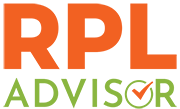Cert IV in Applied Fashion Design & Merchandising - MST40222
Qualification Overview:
Qualification Name:
Cert IV in Applied Fashion Design & Merchandising
Qualification Code and Units of Competency:
MST40222
Processing time:
You can get your desired qualification through RPL pathways within four weeks of getting the sufficient information and evidence of the supporting documents.
Why study Cert IV in Applied Fashion Design & Merchandising?
This certification covers the information and skills required for designer’s assistants, merchandisers, and specialised manufacturing experts, like pattern makers and sewing machinists, that assist with design and manufacturing in the garment and fashion industries.
It incorporates business and design results that expand on technical production talents expertise that will serve as a platform for advancement into design, developing, and responsibilities of merchandising management.
In addition to two tracks that are specifically targeted at the skill requirements of fashion designers and fashion business management, this certification offers a general MST40516 Certificate IV in Applied Fashion Design and Merchandising.
This qualification accepts the following additional qualification descriptors:
MST40516 Certificate IV in Applied Fashion Design and Merchandising is the first pathway (Design and Product Development)
MST40516 Certificate IV in Applied Fashion Design and Merchandising is the second pathway (Business and Merchandising)
This qualification is not associated with any specific licences. However, in some situations, some units in this certification may be subject to licencing or regulatory restrictions. Details should be confirmed with local regulations.
How RPL ADVISOR assist you?
We can give you a FREE RPL Quote today !
RPL ADVISOR recognises the need to convert an overseas qualification into an Australian national qualification, and we offer a variety of fast and simple RPL distance training programs through our partner RTOs to meet any relevant requirements for Australia.
RPL ADVISOR can turn your expertise, talents, knowledge, or overseas credentials into a nationally recognised Australian certification through a comprehensive partner network of Registered Training Organisations (RTOs). The RPL evaluation process can often be done with established proof of your skills and does not necessitate further review.
- Photo (latest)
- Passport
- Resume / CV
- Payslips/work contract/ABN if self-employed
- Letter of Employment (onshore / offshore)
- Current employment contracts
- Evidence of overseas qualifications (if available)
- Transcripts or assessments from related previous qualifications.
- Videos or photos at your work (at least 2 from each task)
- Apprenticeship papers (if available)
- OHS/WHS policies and procedures
- Safe work method statements
- Job safety analysis (if available)
- Evaluation: One of experienced RPL ADVISOR consultants can conduct a free, no-obligation RPL skills check.
- Your Experience: Compiling and submitting your ‘Experience Portfolio’, which includes photographs and videos of you on the job, references, past credentials, and your latest resume, among other things.
- RTO Reviews the Evidence: Using an RPL assessment, a certified assessor from one of our collaborating RTOs can review the evidence and decide whether you are competent in the units for that certification.
- Interview: If all supporting documents meet the requirement of the desired qualification, then the RTO may take your interview.
- Your Certificate: If the RTO determines that you are qualified in all relevant units of competency, the Registered Training Organisation will grant you a certificate.
Cert IV in Applied Fashion Design & Merchandising
To be awarded the MST40516 Certificate IV in Applied Fashion Design and Merchandising, competency must be achieved in twenty-five (25) units of competency:
- seven (7) core units of competency
- eighteen (18) elective units of competency.
Note : Where prerequisite units are identified they must be counted in the total number of units required for achievement of the qualification.
Packaging for an industry pathway
Elective units may be chosen to meet the specialist skill needs of the following areas of application:
- Design and Product Development
- Business and Merchandising
CORE UNITS
| Select all seven (7) units of competency from the following list. | ||
| Unit code | Unit title | |
| MSMENV272 | Participate in environmentally sustainable work practices | |
| MSMWHS200 | Work safely | |
| MSS402051 | Apply quality standards | |
| MSTFD4004 | Calculate cost estimates for fashion products | |
| MSTFD4006 | Interact and network with fashion industry participants | |
| MSTGN2009 | Operate computing technology in a TCF workplace | |
| MSTGN2011 | Identify fibres, fabrics and textiles used in the TCF industry | |
Elective units of competency Select eighteen (18) units as specified below:
Units selected from other Training Packages and accredited courses must be relevant to the qualification outcome and not duplicate units available within this qualification. Specialist electives If packaging for a generic qualification, select a minimum of eight (8) units in any combination Groups A and B. Design and Product Development specialisation – A minimum of five (5) units must be selected from Group A, including the four (4) units marked with # . Business and Merchandising specialisation – A minimum of five (5) units must be selected from Group B, including the four (4) units marked with # . | ||
| Group A – Design and Product Development | ||
| Unit code | Unit title | Prerequisites |
| MSTCL4001 | Perform sample machining of advanced construction garments | MSTFD2006 MSTCL3002 MSTGN2011 |
| MSTCL4002 | Assemble and fit commercially tailored or bespoke garments | |
| MSTCL4003 | Measure, lay up and cut custom-made garments | |
| MSTFD4001 # | Apply design studio process | |
| MSTFD4002 | Apply principles of colour theory to fashion design development | MSTGN2011 MSTFD2005 |
| MSTFD4003 | Assist in preparation of preliminary design concepts | |
| MSTFD4007 | Conduct quality assurance for patterns and garments | |
| MSTFD4008 | Construct stock size block for garment to meet size and fit specifications | |
| MSTFD4009 | Create and edit digital embroidery designs | MSTGN2011 MSTCL3008 |
| MSTFD4010 # | Create pattern to meet design specifications applying advanced patternmaking principles | MSTCL3009 |
| MSTFD4011 | Cut fabrics for prototype designs | |
| MSTFD4012 # | Develop product specifications for fashion design | MSTFD3004 |
| MSTFD4013 | Grade 2-D patterns | |
| MSTFD4014 | Identify influences on contemporary fashion designs and construction techniques | |
| MSTFD4015 # | Create pattern from block to meet customer specifications | MSTCL3009 MSTFD4010 |
| MSTFD4016 | Sew design prototypes | |
| MSTFD4018 | Use and apply sizing systems appropriate for fashion design | |
| MSTFD4019 | Use colourisation techniques on fabrics | MSTGN2011 MSTCL3001 |
| MSTFD4020 | Use electronic fashion design tools | |
| MSTFD4021 | Drape fabrics to make patterns | |
| Group B – Business and Merchandising | ||
| BSBINT405 # | Apply knowledge of import and export international conventions, laws and finance | |
| BSBMKG402 # | Analyse consumer behaviour for specific markets | |
| BSBMKG408 | Conduct market research | |
| BSBMKG413 | Promote products and services | |
| BSBMKG414 | Undertake marketing activities | |
| MSTFD4005 | Communicate and sell design concepts | |
| MSTFD4017 | Source materials and resources for production of fashion designs | |
| MSTGN4004 # | Analyse TCF merchandising and marketing principles | |
| MSTGN4005 | Plan and implement production within a work area | |
| MSTGN4006 # | Apply TCF market supply systems | MSTGN2011 |
| MSTTD4006 | Source textile materials and resources | |
| MSTTD4008 | Present and promote textile design concepts | |
| Group C – General electives | ||
| Unit code | Unit title | Prerequisites |
| BSBINT301 | Apply knowledge of the international trade environment to complete work | |
| BSBINT302 | Apply knowledge of legislation relevant to international trade to complete work | |
| CUACMP301 | Implement copyright arrangements | |
| MSTCL2005 | Use specialised machinery or processes to assist TCF production | |
| MSTCL2006 | Press work | |
| MSTCL2007 | Lay up, mark and cut uncomplicated fabrics and lays | |
| MSTCL2010 | Modify patterns to create basic styles | |
| MSTCL2012 | Organise and plan own work in a home-based production environment | |
| MSTCL2019 | Sew components, complex tasks | |
| MSTCL3001 | Identify fabric performance and handling requirements | MSTGN2011 |
| MSTCL3002 | Prepare and produce sewn garment | MSTFD2006 MSTGN2011 |
| MSTCL3004 | Press whole garments | MSTCL2006 |
| MSTCL3005 | Lay up and cut complicated fabrics and lays | MSTCL2007 |
| MSTCL3006 | Assemble bra or swimwear | MSTFD2006 MSTGN2011 |
| MSTCL3007 | Embellish garment by hand or machine | MSTFD2005 MSTFD2006 MSTGN2011 |
| MSTCL3008 | Set and produce digital embroidery | |
| MSTCL3009 | Develop patterns from a block using basic pattern making principles | |
| MSTCL3010 | Sew woven and stretch knit garments | MSTFD2006 MSTGN2011 |
| MSTCL3011 | Contribute to garment production process improvements | |
| MSTCL3012 | Make marker for complicated fabrics and lays | MSTCL2007 |
| MSTCL3013 | Interpret patterns and apply pattern information | |
| MSTCL3014 | Interact and communicate with garment production personnel | |
| MSTFD2005 | Identify design process for fashion designs | |
| MSTFD2006 | Use a sewing machine for fashion design | |
| MSTFD3004 | Draw a trade drawing for fashion design | |
| MSTGN2001 | Use steaming and pressing equipment in TCF production | |
| MSTGN3002 | Organise and plan own work to achieve planned outcomes | |
| MSTGN3003 | Estimate and cost job | |
| MSTTX3003 | Set up, adjust and maintain industrial sewing machines | |
| PMBWASTE302 | Coordinate waste disposal | |

Related Other Qualifications
- Cert II in Salon Assistant – SHB20216
- Cert III in Make-Up – SHB30221
- Cert III in Hairdressing – SHB30416
- Cert III in Barbering – SHB30516
- Cert III in Beauty Services – SHB30121
- Cert III in Applied Fashion Design & Tech – MST31022
- Cert III in Nail Technology – SHB30321
- Cert IV in Applied Fashion Design & Merchandising – MST40222
- Cert IV in Beauty Therapy – SHB40121
- Cert IV in Hairdressing – SHB40216
- Dip of Applied Fashion Design & Merchand – MST50119
- Dip of Beauty Therapy – SHB50115
- Dip of Salon Management – SHB50216
- Adv Dip of Applied Fashion Design & Merch – MST50122
